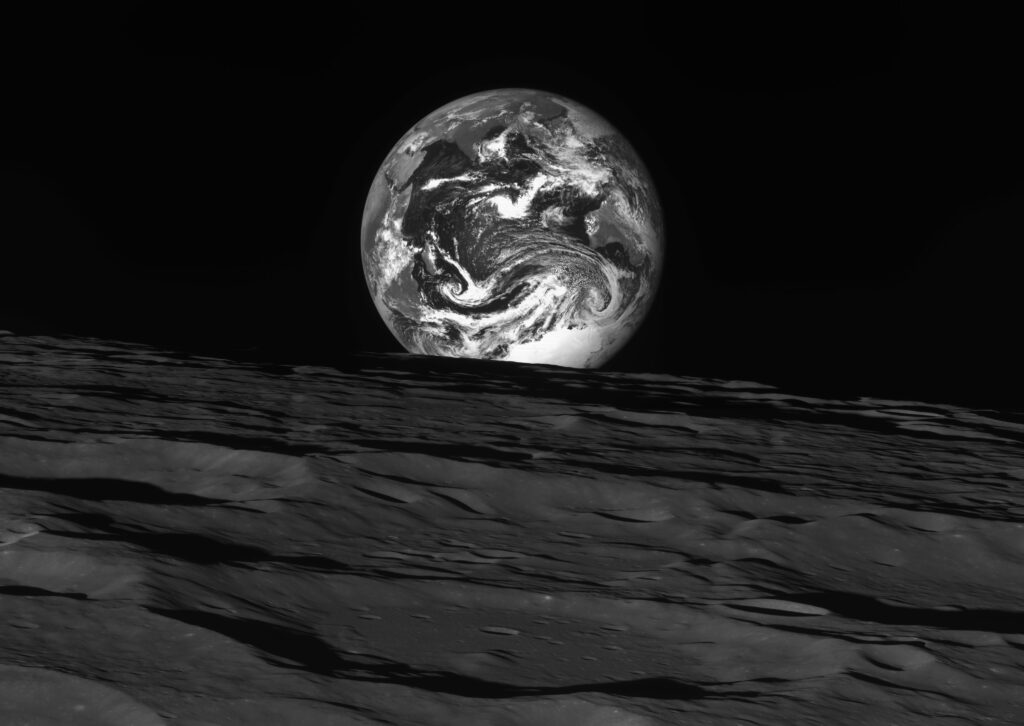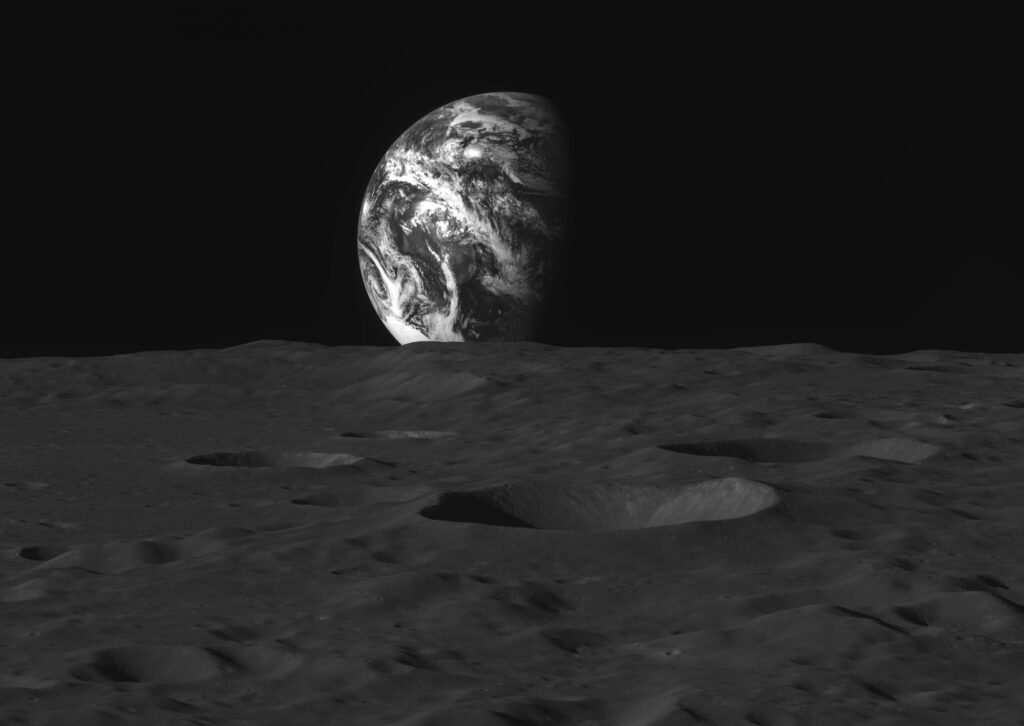The Korean Aerospace Research Institute (KARI) has published the first images taken by the Danuri probe after entering a selenocentric orbit. On it you can see the rise of our planet above the lunar surface.

Danuri went into space in August 2022. It became the first South Korean spacecraft launched into interplanetary space. The target of the mission is the Moon. The device should be engaged in photographing possible landing sites of the next South Korean missions and mineral exploration. Another target of Danuri is the shooting of eternally shaded lunar craters, at the bottom of which, as it is believed, there are ice deposits.
In order to save fuel, the Danuri was launched on an economical ballistic transition trajectory. Because of this, the device took over four months to reach its goal. It entered a permanent orbit around the Moon on December 16.

Currently, the mission’s specialists are checking all the systems of the device and calibrating its scientific instruments. Danuri has already transmitted a lot of images taken with a high-resolution camera. The images published by KARI show the Earth rising above the lunar surface. They were made between December 24, 2022 and January 1, 2023. At the time of the shooting, Danuri was at an altitude of several hundred kilometers above the lunar surface.


According to KARI’s statement, Danuri will start its scientific program in February. In addition, the device will take part in a new experiment to test a communication system based on fault-tolerant network technology. According to the developers, it will become the basis for the creation of the space Internet.
According to https://phys.org
Follow us on Twitter to get the most interesting space news in time
https://twitter.com/ust_magazine

